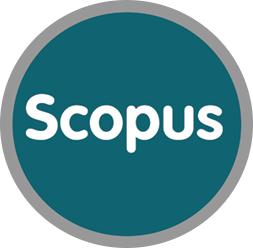Дослідження адсорбційної здатності вуглецевих матеріалів, одержаних з різної рослинної сировини
DOI: https://doi.org/10.15407/hftp15.03.390
Анотація
Метою роботи було дослідження можливостей отримання активованих вуглецевих матеріалів (АВ) з керованою нанопористістю в залежності від використаної сировини шляхом залучення інноваційного методу їхнього виробництва та підтвердження ефекта зменшення густини рідини під дією адсорбційного потенціалу стінок пори шляхом моделювання методом ґраток Больцмана у рамках двовимірної моделі.
Результати дослідження показали, що в залежності від використаної сировини (щепи різних листяних порід деревини) та способу її первинної обробки (залучення інноваційного методу виробництва, зсувної деформації, зокрема) можна одержати АВ з різним співвідношенням мікро- і мезопор, від майже повністю мікропористих зразків до зразків з розвиненою мезопористістю. Показано, що під час карбонізації органічна речовина, яка блокувала пори трубчастої структури, видаляється, утворюючи відкриті отвори. Дані інфрачервоної (ІЧ) Фур’є спектроскопії підтверджують, що сформована поверхня мікро-мезопористого сорбента повинна активно взаємодіяти з полярними та неполярними адсорбатами за допомогою поверхневих функціональних груп, що відповідає отриманим в роботі результатам структурно-сорбційних параметрів АВ.
Шляхом моделювання методом ґраток Больцмана розраховано розподіл густини рідини вздовж осі пори мезопористої матриці в залежності від вихідного кута змочування та розміру капіляра. Показано, що в нанопорах малого розміру (10 нм) густина рідкої фази поступово спадає та на деякій глибині пори настає її стрибкоподібне падіння, що відображає наявність фазового переходу до інтенсивного пароутворення. Отже, підтверджено механізм очистки водних розчинів від шкідливих домішок нанорозмірними порами завдяки ефекту зменшення густини рідини під дією адсорбційного потенціалу стінок пори.
Отримані в роботі мікро-мезопористі АВ можуть бути використані для виробництва широкого спектра матричних та композиційних матеріалів з керованою нанопористістю. Вони є перспективними сорбційними матеріалами, оскільки характеризуються меншими дифузійними ускладненнями при адсорбції. А ефект зменшення густини рідини під дією адсорбційного потенціалу стінок пори добре пояснює можливий механізм очищення забруднених водних рідин з допомогою мезопористої матриці.
Ключові слова
Посилання
1. Kurtov V.D. Water treatment: Handbook. Ed. S.E. Belikova. (Moskov: Aqua-Term, 2007). [in Russian].
2. Khilchevsky V.K. Water supply and drainage: hydroecological aspects: Textbook. (Kyiv: VOC "Kyiv University", 1999). [in Ukrainian].
3. Kienle H., Bäder E. Activated Carbon and its Industrial Application. (Stuttgart: Ferdinand Enke Verlag, 1980). [in Russian].
4. Diyuk V.E. Carbon sorbents. Production, structure and properties: academic manual KNU. (Kyiv: VOC "Kyiv University", 2017). [in Ukrainian].
5. Belyaev E.Yu. Production and use of wood activated carbons for environmental purposes. Chemistry of Plant Raw Materials. 2000. 2: 5. [in Russian].
6. Ampiaw R.E., Yaqub M., Lee W. Adsorption of microcystin onto activated carbon: A review. Membr. Water Treat. 2019. 10(6): 405.
7. Li Y., Alibakhshi M.A., Zhao Y., Duan C. Exploring ultimate water capillary evaporation in nanoscale conduits. Nano Lett. 2017. 17(8): 4813. https://doi.org/10.1021/acs.nanolett.7b01620
8. Li Y., Chen H., Xiao S., Alibakhshi M.A., Lo Ch.-W., Lu M.-Ch., Duan Ch. Ultrafast Diameter-Dependent Water Evaporation from Nanopores. ACS Nano. 2019. 13: 3363. https://doi.org/10.1021/acsnano.8b09258
9. Mel'nik L.M., Tkachuk N.A., Turchun O.V., Diyuk V.E., Ischenko O.V., Byeda O.O., Kisterska L.D., Loginova O.B., Lysovenko S.O., Gontar O.G., Garashchenko V.V. Adsorption properties of shungite in purification of water-alcohol solutions. J. Superhard Mater. 2017. 39: 416. [in Ukrainian]. https://doi.org/10.3103/S1063457617060053
10. Diyuk V.E,. Ishchenko O.V, Mel'nyk L.M., Kisterska L.D., Loginova O.B., Harashchenko V.V., Lysovenko S.O., Byeda O.A., Tkachuk N.A., Shevchenko O.Yu., Turchun O.V. Restoration of adsorption properties of shungite. J. Superhard Mater. 2019. 4: 1. https://doi.org/10.3103/S1063457619040026
11. Jagiello J., Olivier J.P. 2D-NLDFT Adsorption Models for Carbon Slit-Shaped Pores with Surface Energetical Heterogeneity and Geometrical Corrugation. Carbon. 2013. 55: 70. https://doi.org/10.1016/j.carbon.2012.12.011
12. Jagiello J., Olivier J.P. Carbon Slit Pore Model Incorporating Surface Energetical Heterogeneity and Geometrical Corrugation. Adsorption. 2013. 19: 777. https://doi.org/10.1007/s10450-013-9517-4
13. Efremov A.A., Gontar O.G., Loginova O.B., Ilnytska H.D., Staryk S.P. An Investigation into the Behavior of Liquid Drops on Heterogeneous Surfaces: A Theoretical and Experimental Approach. J. Superhard Mater. 2024. 46: 129. [in Ukrainian].nhttps://doi.org/10.3103/S1063457624020023
14. Mopoung S., Dejang N. Activated carbon preparation from eucalyptus wood chips using continuous carbonization-steam activation process in a batch intermittent rotary kiln. Sci. Rep. 2021. 1: 13948. https://doi.org/10.1038/s41598-021-93249-x
15. Oliynyk S., Mel'nyk L., Samchenko I., Tkachuk N., Loginova O., Kisterska L. The influence of shungite treatment methods on its absorption properties and on water treatment quality for beverages production. Ukr. Food J. 2019. 8(4): 891. https://doi.org/10.24263/2304-974X-2019-8-4-18
DOI: https://doi.org/10.15407/hftp15.03.390
Copyright (©) 2024 O. O. Efremov, V. V. Kusturov, O. B. Loginova, V. E. Diyuk, S. P. Starik


This work is licensed under a Creative Commons Attribution 4.0 International License.



